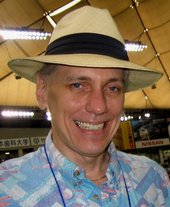
THE HOT CORNER: Fate bites Kobayashi for last time

THE HOT CORNER: Fate bites Kobayashi for last time
by Jim Allen (Jan 28, 2010)
It's simple word association. Say the name Shigeru Kobayashi and Suguru Egawa's name follows.
Kobayashi was a herky-jerky, side-arm right-hander whose energetic delivery often tore his cap from his head. Yet no matter what success he earned on the field, Kobayashi will forever be remembered for something else: He was the man who was traded for Egawa.
Two years after Kobayashi was selected as the Yomiuri Giants' sixth draft pick in 1971, Egawa was taken first by the Hankyu Braves. The latter, however, had other plans. Egawa prefered to pursue his dream of pitching for Keio University. Unfortunately, he failed Keio's entrance exam and had to settle for Hosei University.
While Egawa became a big Tokyo Six University League star, Kobayashi rose through the ranks to become a stalwart of the Giants' rotation.
As a university senior, Egawa was again eligible for the draft, and on Nov. 22, 1977--a month after Kobayashi had won the Sawamura Award as the Central League's most exemplary starting pitcher--Egawa became the first-round draft pick of the Lions, then based in Fukuoka. After saying Kyushu was too far away for him, Egawa left the country.
During the year in which the Lions owned Egawa's negotiating rights, he played for the University of Southern California, going 2-2, and for the Anchorage Glacier Pilots in the Alaska summer league. The right-hander returned to Japan on Nov. 20, 1979, and within two days Nippon Professional Baseball was thrown into complete crisis.
The night prior to the 1978 draft, when Egawa's rights would once more be up for grabs, the Giants' top management tried to pull a fast one.
Claiming the Lions' rights to Egawa had elapsed on Nov. 21, the Giants signed Egawa to a contract. When the Central League refused to recognize the deal, Yomiuri threw a gigantic temper tantrum, boycotting the next day's draft, where the Tigers won Egawa's rights in a four-way, first-round lottery.
Clutching at straws, the Giants insisted the draft was invalid because of a rule requiring all 12 teams to participate. Yomiuri's ownership then played its favorite trump card: If NPB refused to recognize Egawa's contract with the Giants, the club would withdraw from the 12-team system and start its own league.
The obvious solution would be for the Tigers to trade Egawa's rights to the Giants, but this was prohibited by a rule stating new players cannot be traded prior to Opening Day.
In the end, after massive amounts of arguing and posturing, an extraordinary trade was engineered to appease the Giants. Kobayashi, in the prime of his career with Japan's best team, was unceremoniously sent to a club of perennial also-rans for the 1979 season.
While Egawa's name became something to sneer about, Kobayashi gave Tigers fans something to cheer about.
In his first season at Koshien, he went 22-9 for a fourth-place team. The right-hander won his second Sawamura Award, while the rookie Egawa went 9-10. But that was the end of the fable.
Kobayashi compiled a 77-56 record in five seasons for the Tigers, while Egawa, went 135-72 in nine seasons with Yomiuri.
After his retirement, Kobayashi worked as a media analyst, appeared in a wide variety of TV programs and once ran unsuccessfully for political office.
In 1997, he was hired as a pitching coach for the Kintetsu Buffaloes, a job he lost after the 2001 season, when the Buffs won the Pacific League with a Japan-worst 4.98 ERA. Kobayashi returned to coaching in 2007 in South Korea, then joined the Hokkaido Nippon Ham Fighters last season as a coach under his former Buffaloes boss, Masataka Nashida.
Working in the Eastern League, Kobayashi taught several struggling hurlers how to drop down, as he himself had done in his playing days.
Their success upon returning to the big club contributed to the Fighters' third PL pennant in four years and earned Kobayashi a first-team job.
For some people, however, no success seems to come without its pitfall. Just as it appeared Kobayashi was in the right place at the right time again, his heart gave out and his herky-jerky path through baseball and life ended far too soon.
To access the original work (if still available), please reference:
http://www.yomiuri.co.jp/dy/sports/20100128TDY20305.htm.
Back to the works of Jim Allen
This work is licensed under a Creative Commons License.
Some rights reserved.
